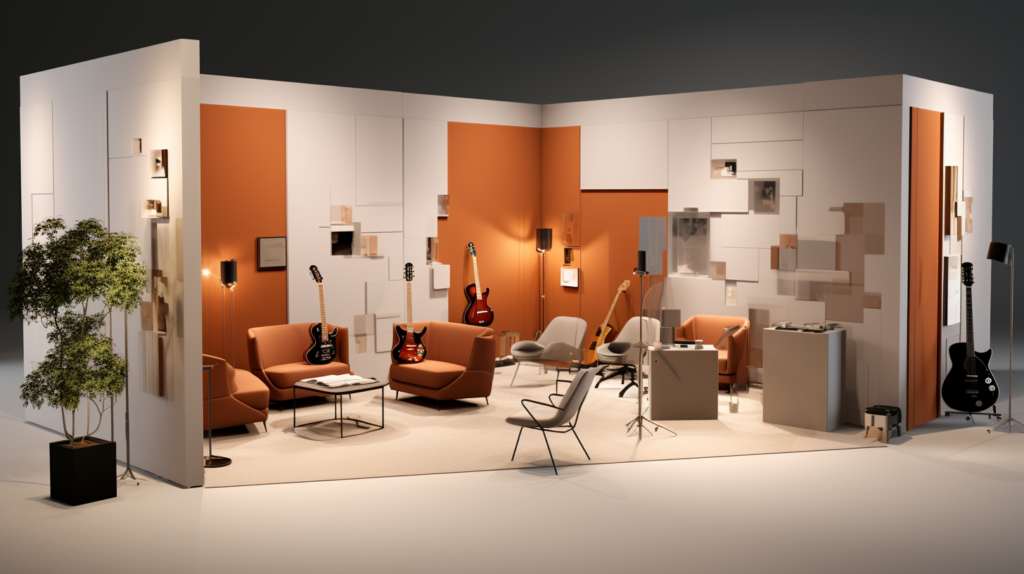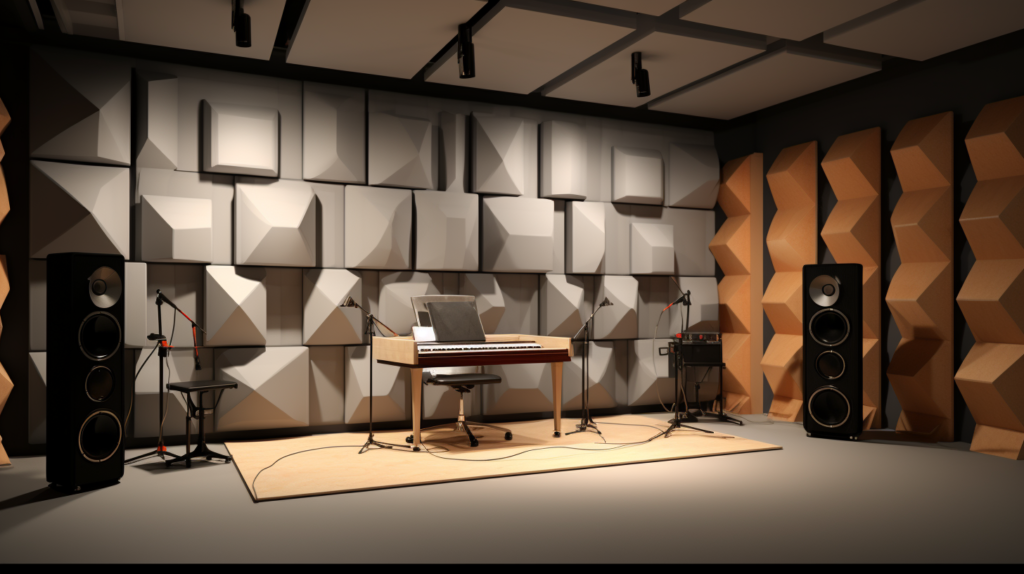Ever found yourself yelling over loud traffic during an important Zoom call, or struggling with poor acoustics during movie nights at home?
Understanding the difference between soundproofing and acoustic treatment can solve these issues and enhance your auditory experience. However, confusing the two could lead to ineffective and costly mistakes.
In this guide, we’ll uncover the essentials of both methods to help you make the right choice for your space. So, let’s dive into the nitty-gritty details.
Why Should You Understand the Difference Between Soundproofing and Acoustic Treatment?

Understanding the difference between soundproofing and acoustic treatment is vital for anyone dealing with sound management in any capacity.
Whether you’re a homeowner looking for peace and quiet, or a studio manager aiming for optimal recording conditions, the techniques you choose will be pivotal.
Misunderstanding or conflating these two methods can lead to ineffective solutions.
For instance, you might invest in soundproofing when your real issue is internal echo, which is a problem better solved by acoustic treatment.
Knowing the distinction helps you make informed choices, ensuring that your investment in sound management is both effective and efficient.
What Are the Main Goals of Soundproofing and Acoustic Treatment?

The goals of soundproofing and acoustic treatment are distinct, and understanding these goals is crucial for effective sound management.
Soundproofing is all about creating a barrier to prevent the movement of sound into or out of a given space.
It’s the method you’d choose if you’re looking to block out street noise, or if you’re a musician aiming to keep your sound from bothering the neighbors.
Contrastingly, acoustic treatment is not about blocking sound but optimizing it within a particular space.
For example, you’d use acoustic treatment techniques to control issues like echo, reverberation, and sound clarity within a room.
The goal here is not to prevent sound from entering or leaving the space, but rather to make the sound within the space as clear and pleasant as possible.
What Materials Are Commonly Used in Soundproofing and Acoustic Treatment?

Selecting the right materials is crucial for the success of either soundproofing or acoustic treatment.
For soundproofing, materials like foam, rubber, and insulation boards are common choices.
These materials are specifically designed to block or absorb sound, thereby serving as effective barriers against noise intrusion.
In acoustic treatment, a wide range of materials can be used, each with a specific function. Foam panels are effective for high-frequency absorption, while bass traps are used for low-frequency absorption.
Among these materials, polyester acoustic panels are a standout choice for their effectiveness in absorbing sound waves, thereby reducing reverberation and improving sound clarity within a room.
How Do Soundproofing and Acoustic Treatment Work Individually?

Both soundproofing and acoustic treatment are grounded in the principles of physics, specifically the behavior of sound waves.
Soundproofing materials, being dense and mass-loaded, serve as a barrier that prevents sound waves from passing through.
This is based on the principle that sound waves lose energy when they encounter a medium through which they cannot easily pass.
Acoustic treatment works a bit differently. It aims to control the behavior of sound waves once they are inside a given space.
This can involve a variety of techniques, such as sound absorption, where materials like foam or polyester acoustic panels are used to soak up sound waves.
Other methods include sound diffusion, which scatters the sound waves, and sound reflection, which uses materials to bounce sound waves in specific directions.
Where Are Soundproofing and Acoustic Treatment Typically Applied?

Soundproofing has a broad range of applications; it’s used in residential settings to block out street noise, in corporate environments to create private meeting rooms, and in industrial settings where machinery noise can be a concern.
In each of these settings, the primary goal is to isolate a space from external sounds.
Acoustic treatment is generally used in more specialized settings, such as recording studios or theaters.
Here, the focus is less on blocking sound from the outside and more on optimizing the sound within the space.
For instance, a recording studio would use acoustic treatment to create an environment where every note is heard clearly, without the interference of echoes or reverberations.
How Effective Are Soundproofing and Acoustic Treatment?

Both soundproofing and acoustic treatment are highly effective when applied correctly, but it’s important to use each for its intended purpose.
Soundproofing is excellent for preventing noise intrusion but does little to manage the quality of sound within a space.
It’s possible to have a perfectly soundproofed room with terrible internal acoustics.
On the other hand, acoustic treatment can dramatically improve the sound quality within a space but does not prevent sound from entering or leaving the room.
If you have a home theater with excellent acoustic treatment, you’ll enjoy a clear and balanced sound, but you’ll still hear the neighbor’s lawnmower if the room isn’t also soundproofed.
What Are the Cost Differences Between Soundproofing and Acoustic Treatment?

Cost is often a significant factor when choosing between soundproofing and acoustic treatment.
Generally speaking, soundproofing can be more expensive, especially if it involves major structural changes to a room or building.
The cost of soundproofing materials can also add up, and there’s often the additional cost of professional installation.
Acoustic treatment can often be done more economically, especially if you’re willing to take on some of the work yourself.
Materials like foam panels can be relatively inexpensive, and there are even DIY options for those on a tight budget.
Polyester acoustic panels offer a cost-effective yet high-quality solution for sound absorption and can be easily installed without professional help.
When Should You Opt for Soundproofing?

Opting for soundproofing is advisable when your primary concern is to block out external noise.
For instance, if you live near a busy street and the traffic noise disrupts your life, soundproofing techniques like installing dense window panels or adding mass-loaded vinyl to your walls can offer relief.
This method is also ideal for office spaces located in bustling areas where external noise could disrupt work.
When Is Acoustic Treatment the Better Option?

If you are looking to improve the internal sound quality of a room, acoustic treatment is the better option.
This is especially true for specialized spaces like recording studios, home theaters, and auditoriums.
In a recording studio, for example, acoustic treatment can help achieve a clean and clear sound, free from echoes and other distortions that can ruin recordings.
Can Soundproofing and Acoustic Treatment Be Combined?

The combination of soundproofing and acoustic treatment is often the most effective solution for managing sound.
For example, in a recording studio, soundproofing can keep external noises at bay, while acoustic treatment can ensure optimal recording conditions.
In such scenarios, the two methods complement each other, providing both sound isolation and quality enhancement.
Conclusion
Choosing between soundproofing and acoustic treatment comes down to your specific needs.
Soundproofing is ideal for blocking external noise, while acoustic treatment improves internal sound quality.
They can be used separately or combined for comprehensive sound management.
Cost is a factor, with soundproofing often being more expensive.
Understanding your unique requirements will guide you in making the most effective choice for sound control.
